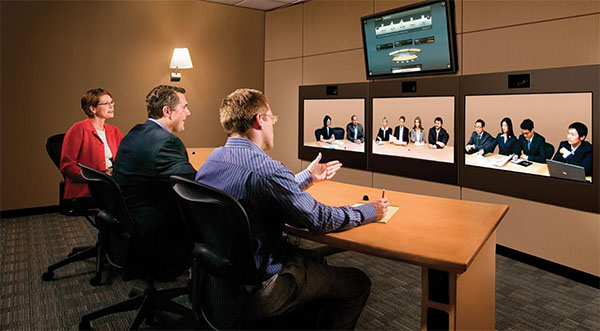A concise overview of the current achievements of AI technology in video and voice applications within video conferencing and remote teaching contexts.
AI Technology's Expanding Role in Video Conferencing

In today’s fast-paced world, artificial intelligence (AI) technology has witnessed significant progress in its application and growth, particularly within the realm of Unified Communications (UC). It has found a fertile ground for innovation in video conferencing and remote teaching, with immense potential for further expansion and evolution in the foreseeable future. In this article, we will provide a concise overview of the current achievements of AI technology in video and voice applications within video conferencing and remote teaching contexts, while also exploring the exciting prospects for its development.
Advancements in AI for Video Applications
AI technology has revolutionized the landscape of video conferencing with a variety of enhancements and features, including:
Video Enhancement: AI-driven solutions enhance video quality by performing tasks like noise reduction, automatic white balance adjustment, and automatic backlight compensation.
Automatic Tracking and Framing: AI can intelligently track and frame the positions of participants, ensuring they always remain in the frame, while also adjusting the camera’s field of view as needed.
Eye Contact: AI can guide participants to maintain eye contact with the camera, delivering a more authentic face-to-face meeting experience.
Gesture Recognition: The system recognizes specific gestures captured on camera and triggers corresponding actions, making it useful for specific activities such as training sessions.
Face Recognition: Widely employed in applications like meeting sign-in, nameplate displays, and training roll call, AI-powered face recognition streamlines administrative processes.
Video Content Analysis: AI goes further by analyzing video content such as whiteboards, screen sharing, and presentations, facilitating improved visualization and annotation capabilities.
Virtual Backgrounds and Filters: Virtual background and filter technology, guided by AI, allows users to personalize their video appearances. Real-time background identification and filter application enhance video quality.
Multi-Camera Collaboration: Employing multiple camera lenses, AI captures images of multiple participants simultaneously, creating a more immersive and user-friendly video conferencing experience. This technology is equally beneficial in enriching teaching content.
AI’s Influence on Voice Applications
AI is equally impactful in voice applications, offering several valuable features:
Voice Enhancement: Utilizing AI, intelligent noise reduction and voice enhancement ensure that voices are clear and smooth, even in noisy environments.
Audio-Assisted Video: Sound source localization technology aids the camera in tracking the speaker, ensuring they remain centered in the frame.
Real-Time Translation and Subtitles: AI-driven voice recognition and natural language processing technology enable real-time translation and subtitles, fostering effective communication in multilingual environments.
Intelligent Meeting Management: In video conferencing, AI automates tasks such as recording meeting content and organizing meeting minutes, streamlining post-meeting processes.
The Future of AI in Video Conferencing
Looking ahead, the future of AI in video conferencing holds exciting possibilities:
Expression Analysis: Facial recognition technology will delve deeper into analyzing participants’ facial features and expressions, enabling a more immersive and personalized experience in virtual meetings and training environments.
Authentication & Security: AI will play a pivotal role in identifying and verifying the identity of participants, fortifying the security of video conferencing platforms.
Privacy Protection: Enhanced privacy filtering and data security measures will address concerns about privacy protection in video conferencing settings.
Automation through Multi-Modal Perception: Combining cameras with voice recognition, depth sensors, and infrared technologies will provide comprehensive environmental perception, intelligently adapting the environment configuration in real-time, thus optimizing the meeting or training experience.
In conclusion, AI’s remarkable journey within video conferencing and remote teaching is marked by continual progress and innovation. As AI technology evolves, it promises to bring us even closer to achieving seamless, immersive, and secure communication and collaboration in the digital age.
"*" indicates required fields
Your Name*
First
Last
Title*
Company/Institution Name*
Email*
Phone*
Are you a current LightWerks customer?
ChooseYes (Within the last 18 months)Yes, but not recentlyNoI don't know
Preferred/Closest LightWerks Office
ChooseBoise, IdahoLos Angeles/O.C./Inland EmpireNorthern Idaho/Eastern WashingtonPortland, OregonSan DiegoSan Francisco BayNot Near any LightWerks Office
How may we help you?*
CAPTCHA
?








